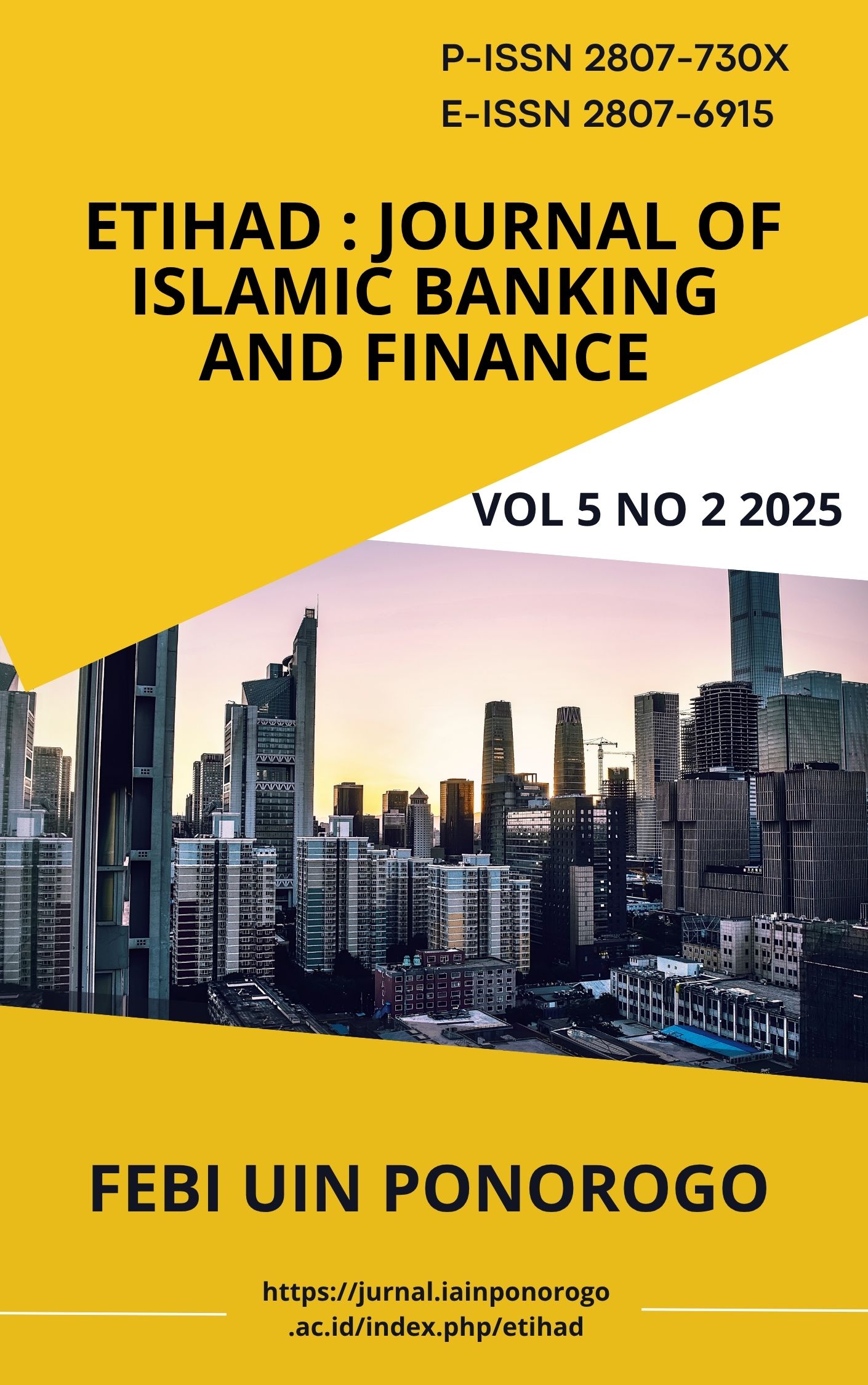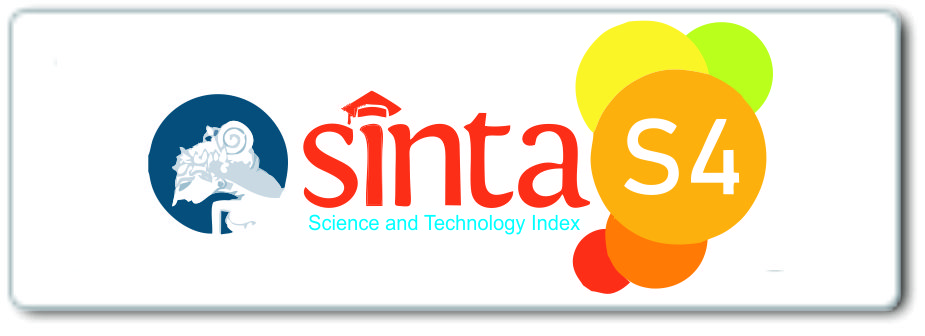Marketing Communication Strategy for Gold Installment Products to Increase the Number of Customers at Bank Syariah
DOI:
https://doi.org/10.21154/etihad.v5i2.12033Keywords:
Marketing communication strategies, gold installments, Islamic banking, customer increaseAbstract
Introduction: This study aims to analyze the marketing communication strategy of gold installment products in Islamic banking to increase the number of customers. Research Methods: The research method used is qualitative, with data collection techniques through in-depth interviews, observations, and document review. Results: The study results show that an effective marketing communication strategy combines traditional and digital media, sharia-based product education, and a personal approach that builds customer trust. The strategic advantages include compliance with sharia principles, product innovation relevant to market needs, responsive service, and consistent communication. These findings enrich the previous literature by providing empirical evidence that the success of gold installment products is determined by the attractiveness of gold investments and the effectiveness of marketing communication strategies that can build customer understanding and loyalty. Conclusion: This study recommends improving Islamic financial literacy, enhancing digital promotion, and building strategic partnerships to expand the market. These efforts are expected to make gold installment products competitive and sustainable Sharia investment instruments in the modern financial industry.
References
Aminuddin, L. H., Ulfah, I., Ratnawati, S. R., & Wahyudi, C. (2023). Ulama’s Resistance to the Closing of Worship Places During The COVID-19 Pandemic in Indonesia. Qualitative Report, 28(6), 1801–1816. https://doi.org/10.46743/2160-3715/2023.5871
Anantachart, S. (2006). Integrated marketing communications and market planning: Their implications to brand equity building. Journal of Promotion Management, 11(1), 101–125. https://doi.org/10.1300/J057v11n01_07
Camilleri, M. A. (2018). Integrated Marketing Communications. In Tourism, Hospitality and Event Management (pp. 85–103). https://doi.org/10.1007/978-3-319-49849-2_5
Changchit, C., Lonkani, R., & Sampet, J. (2017). Mobile banking: Exploring determinants of its adoption. Journal of Organizational Computing and Electronic Commerce, 27(3), 239–261. https://doi.org/10.1080/10919392.2017.1332145
Clemes, M. D., Gan, C., & Du, J. (2012). The factors impacting on customers’ decisions to adopt Internet banking. Banks and Bank Systems, 7(3), 33–50. https://www.scopus.com/inward/record.uri?eid=2-s2.0-84883464968&partnerID=40&md5=d1670ec7ef3d43a28924e64961a7a451
Dalimunthe, Y. S. (2024). Analisis Strategi Pemasaran Pembiayaan Murabahah pada Produk Cicil Emas untuk Meningkatkan Jumlah Nasabah (Studi Kasus Bank Syariah Indonesia KC S. Parman Medan). Jurnal Ekonomi Efektif. http://repository.uinsu.ac.id/id/eprint/24206
De Obesso Grijalvo, A. M., Gutiérrez, S. S. M., & Jiménez Torres, N. H. (2012). The role of reputation, word-of-mouth, trust and uncertainty when contracting a bank. Investigaciones Europeas de Direccion y Economia de La Empresa, 18(3), 190–199. https://doi.org/10.1016/j.iedee.2012.05.006
Dewi, R. M., & Hartono, T. (2019). E-Commerce Marketing Communication Strategies on Consumer Buying Interest. IOP Conference Series: Materials Science and Engineering, 662(3). https://doi.org/10.1088/1757-899X/662/3/032013
Dhaoui, C. (2014). An empirical study of luxury brand marketing effectiveness and its impact on consumer engagement on facebook. Journal of Global Fashion Marketing, 5(3), 209–222. https://doi.org/10.1080/20932685.2014.907605
Dmytruk, O. V. (2009). Applying marketing communications in activities of recreational-tourist enterprises. Actual Problems of Economics, 9, 108–112. https://www.scopus.com/inward/record.uri?eid=2-s2.0-77952647747&partnerID=40&md5=4f1595142f85f9a441e78873316e602d
Farquhar, J. D., & Panther, T. (2007). The more, the merrier? An exploratory study into managing channels in UK financial services. International Review of Retail, Distribution and Consumer Research, 17(1), 43–62. https://doi.org/10.1080/09593960601132300
Ferreira, F. A. F., & Barata, J. M. M. (2007). The portuguese e-banking activity. Proceedings of the 2nd International Conference on Internet Technologies and Applications, ITA 07, 467–470. https://www.scopus.com/inward/record.uri?eid=2-s2.0-84857166731&partnerID=40&md5=eef4f5a19ca6a8f66f3e79f2c41b9d95
Frangos, C. C., Fragkos, K. C., Sotiropoulos, I., Manolopoulos, G., & Valvi, A. C. (2011). A logistic regression model of factors predicting demand of bank loans by customers in Greece. Creating Global Competitive Economies: A 360-Degree Approach - Proceedings of the 17th International Business Information Management Association Conference, IBIMA 2011, 4, 651–668. https://www.scopus.com/inward/record.uri?eid=2-s2.0-84905084950&partnerID=40&md5=ef739d189e1faf83b38ef1a43588d01e
FTM. (2024, December 24). Interview.
Ganesamurthy, K. (2019). Customer satisfaction on online banking services at present scenario in India. International Journal of Advanced Science and Technology, 28(19), 1208–1213. https://www.scopus.com/inward/record.uri?eid=2-s2.0-85080106210&partnerID=40&md5=197836506d3195b2e956ed95ea8bfa2a
GM. (2024a, December 11). Interview.
GM. (2024b, December 17). Intervew.
Gurung, M. (2023). Factors influencing commercial bank selection choices by customers in Bhutan - an analysis using analytic hierarchy process. International Journal of Multicriteria Decision Making, 9(3), 231–249. https://doi.org/10.1504/IJMCDM.2023.134122
Harahap, A. N., Marliyah, M., & Anggraini, T. (2024). Analisis Strategi Pemasaran Pembiayaan Murabahah pada Produk Cicil Emas dalam Meningkatkan Jumlah Nasabah: Studi Kasus BSI KCP. Medan Marelan. El-Mal: Jurnal Kajian Ekonomi & Bisnis Islam, 5(3), 1340–1354. http://repository.uinsu.ac.id/22374/
Harizi, A., & Trebicka, B. (2023). The Integration of Social Media in Integrated Marketing Communication: A Systematic Review and Theorical Framework. Academic Journal of Interdisciplinary Studies, 12(6), 159–175. https://doi.org/10.36941/ajis-2023-0161
HD. (2024, December 20). Interview.
Hui, Y., & Xian, H. (2014). Customer participation in personal financial business of Chinese commercial banks and its influence factors. BioTechnology: An Indian Journal, 10(6), 1605–1612. https://www.scopus.com/inward/record.uri?eid=2-s2.0-84920921008&partnerID=40&md5=961a3d3006bb607b9edccffad7690de0
Irtisamul, S., Hassan, M. B., Sadia, F., Hasan, M., & Rokonuzzaman, M. (2024). Understanding Consumer Perceptions of Green Software: A Study in the Online Social Media Marketing Context. Procedia Computer Science, 237, 775–782. https://doi.org/10.1016/j.procs.2024.05.165
Jantan, M., Kamarudin, A. R., & Hoe, O. B. (2015). Service Quality Criteria and Consumer Choice in Retail Banking. In Developments in Marketing Science: Proceedings of the Academy of Marketing Science (p. 14). https://doi.org/10.1007/978-3-319-17320-7_5
Jung, J., & Lee, B. (2011). An empirical investigation of mobile service channel usage and mutual influence with internet service channel. ACM International Conference Proceeding Series. https://doi.org/10.1145/2378104.2378110
Kaushik, P., Rathore, S. P. S., Rathore, R., Chamoli, S., & Chamoli, S. (2025). Social media marketing strategy. In Industry 5.0: Sustainable Business Practices for a Bright Future (pp. 83–94). https://www.scopus.com/inward/record.uri?eid=2-s2.0-105003984574&partnerID=40&md5=f68edcbecf6d3f1447258c0eca2cb0ff
Khalil, M. (2022). CONSIDERING MURABAHAH GOLD FINANCING PRACTICE IN ACEH WITH REFERENCE TO ISLAMIC BANKING AND SHARIA PAWNSHOP. Miqot: Jurnal Ilmu-Ilmu Keislaman, 46(2), 220–234. https://doi.org/10.30821/miqot.v46i2.915
Khodijah, S. L. Z., Fasa, M. I., & Suharto, S. (2023). Implementasi bauran pemasaran syariah pada kosmetik berlabel halal terhadap keputusan pembelian konsumen pada perspektif islam. 2(6), 735–744. https://doi.org/10.53625/juremi.v2i6.3852
Kim, K. O. K. (2015). Measurement of Digital Content Marketing Effectiveness Through Social Media. In Developments in Marketing Science: Proceedings of the Academy of Marketing Science (p. 815). https://doi.org/10.1007/978-3-319-10951-0_294
Leary, R. B. (2015). Relationship Maintenance Through Firm-Initiated Service Devlivery Change: A Process of Proactive Communication. In Developments in Marketing Science: Proceedings of the Academy of Marketing Science (pp. 117–120). https://doi.org/10.1007/978-3-319-10951-0_42
LN. (2024, December 11). Interview.
LR. (2024, December 20). Interview.
Lumanaj, J., Guri, A., Aliu, A., & Lubonja, O. (2013). Quality of service in the banking sector. Mediterranean Journal of Social Sciences, 4(9), 418–424. https://doi.org/10.5901/mjss.2013.v4n9p418
Madhuwanthi, A., & Patil, K. (2023). Adaptive QoS framework by regression analysis in internet banking. AIP Conference Proceedings, 2869(1). https://doi.org/10.1063/5.0168822
McCabe, S. (2008). Marketing communications in tourism and hospitality: Concepts, strategies and case. In Marketing Communications in Tourism and Hospitality: Concepts, Strategies and Case. https://doi.org/10.4324/9780080941813
Noor, S. (2017). Customer decision: An empirical study on sourcing credit from banks. Journal of Advanced Research in Law and Economics, 8(4), 1250–1254. https://doi.org/10.14505/jarle.v8.4(26).23
Rahayu, S. K., & Fatima, F. N. (2019). Marketing Communication Strategy with E-Commerce. IOP Conference Series: Materials Science and Engineering, 662(3). https://doi.org/10.1088/1757-899X/662/3/032058
Rana, V. S., Raina, A., & Bathla, G. (2025). Marketing strategies on social media in the hotel industry: A comprehensive analysis. In Transforming the Service Sector With New Technology (pp. 409–418). https://doi.org/10.4018/979-8-3693-7447-4.ch024
Safakli, O. V. (2007). A research on the basic motivational factors in consumer bank selection: Evidence from Northern Cyprus. Banks and Bank Systems, 2(4), 93–100. https://www.scopus.com/inward/record.uri?eid=2-s2.0-84865349728&partnerID=40&md5=b3e3ad7f9fd0fb0a2d91b5c4b2ccd6eb
Samadi, S., & Akhtar, I. (2023). A Review of Social Media Marketing on Digital Savvy Brand Shoppers. Lecture Notes in Networks and Systems, 735 LNNS, 641–655. https://doi.org/10.1007/978-3-031-37164-6_46
Sheikholeslami, M., & Odinaev, F. F. (2012). Review of performance of Bank Saderat of Guilan on components of service quality scale. Life Science Journal, 9(3), 2018–2022. https://www.scopus.com/inward/record.uri?eid=2-s2.0-84874895657&partnerID=40&md5=d66657680d2e284097a5d544b4604c4a
Somasekhar, D., Kumar, K. P., Kumar, B. S., Kumar, V. V, Sama, H., & Tirluka, C. L. (2023). A mediating role of corporate social responsibility between service quality and customer satisfaction. AIP Conference Proceedings, 2707. https://doi.org/10.1063/5.0143103
Syahputra, W. G., & Sudiarti, S. (2021). Gold investment by installment in the bank indonesian sharia kabanjahe branch: Analysis of Law No. 21 of 2008 and DSN MUI Fatwa Number 77 of 2010. Jurnal Ilmiah Mizani, 8(2), 331–340. https://doi.org/10.29300/mzn.v8i2.2816
Symonds, M., Wright, T., & Ott, J. (2007). The customer-led bank: How to retain customers and boost top-line growth. Journal of Business Strategy, 28(6), 4–12. https://doi.org/10.1108/02756660710835851
Tallon, P. P. (2010). A service science perspective on strategic choice, IT, and performance in U.S. banking. Journal of Management Information Systems, 26(4), 219–252. https://doi.org/10.2753/MIS0742-1222260408
Thaichon, P., Quach, S., Bavalur, A. S., & Nair, M. (2017). Managing Customer Switching Behavior in the Banking Industry. Services Marketing Quarterly, 38(3), 142–154. https://doi.org/10.1080/15332969.2017.1325644
Vanitha, S., & Saravanakumar, K. (2019). The usage of gold and the investment analysis based on gold rate in India. International Journal of Electrical and Computer Engineering, 9(5), 4296–4301. https://doi.org/10.11591/ijece.v9i5.pp4296-4301
Vashishtha, S., & Sharma, S. (2017). The fallacy of profitability through loyalty in Banking: The growing importance of acquiring a new customer. International Journal of Applied Business and Economic Research, 15(9), 213–219. https://www.scopus.com/inward/record.uri?eid=2-s2.0-85019546350&partnerID=40&md5=edafb11bb3f69c79d4e31db0bee2cbc7
Yankov, Y. (2020). Behavioural Economic Tools as a Way to Increase Customers’ Response in the Banking Sector. Economic Alternatives, 26(2), 311–327. https://doi.org/10.37075/EA.2020.2.08
Yusup, D. K. (2019). Multi Contract As A Legal Justification Of Islamic Economic Law For Gold Mortgage Agreement In Islamic Bank. Jurnal Ilmiah Peuradeun, 7(1), 1–20. https://doi.org/10.26811/peuradeun.v7i1.318
Zabri, Z., & Abduh, M. (2013). Re-examining the bank patronize behavior in Malaysia: A logistic regression approach. World Applied Sciences Journal, 25(4), 574–580. https://doi.org/10.5829/idosi.wasj.2013.25.04.1200
Downloads
Published
Issue
Section
License
Copyright (c) 2025 Luthfi Hadi Aminuddin, Samrotul Farida Agustina Wulandari

This work is licensed under a Creative Commons Attribution 4.0 International License.
Etihad: Journal of Islamic Banking and Finance allow the author(s) to hold the copyright without restrictions and allow the author(s) to retain publishing rights without restrictions, also the owner of the commercial rights to the article is the author.







